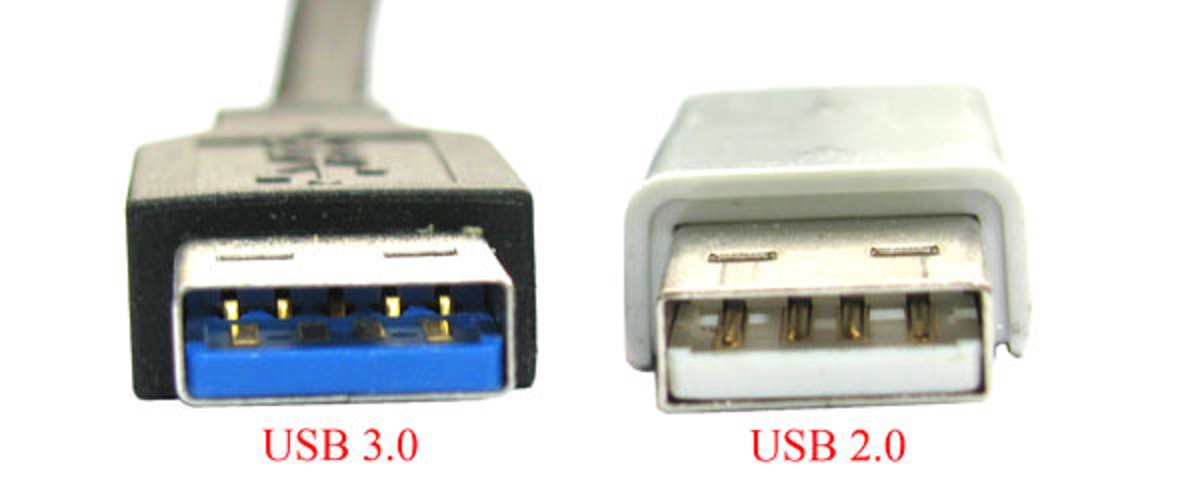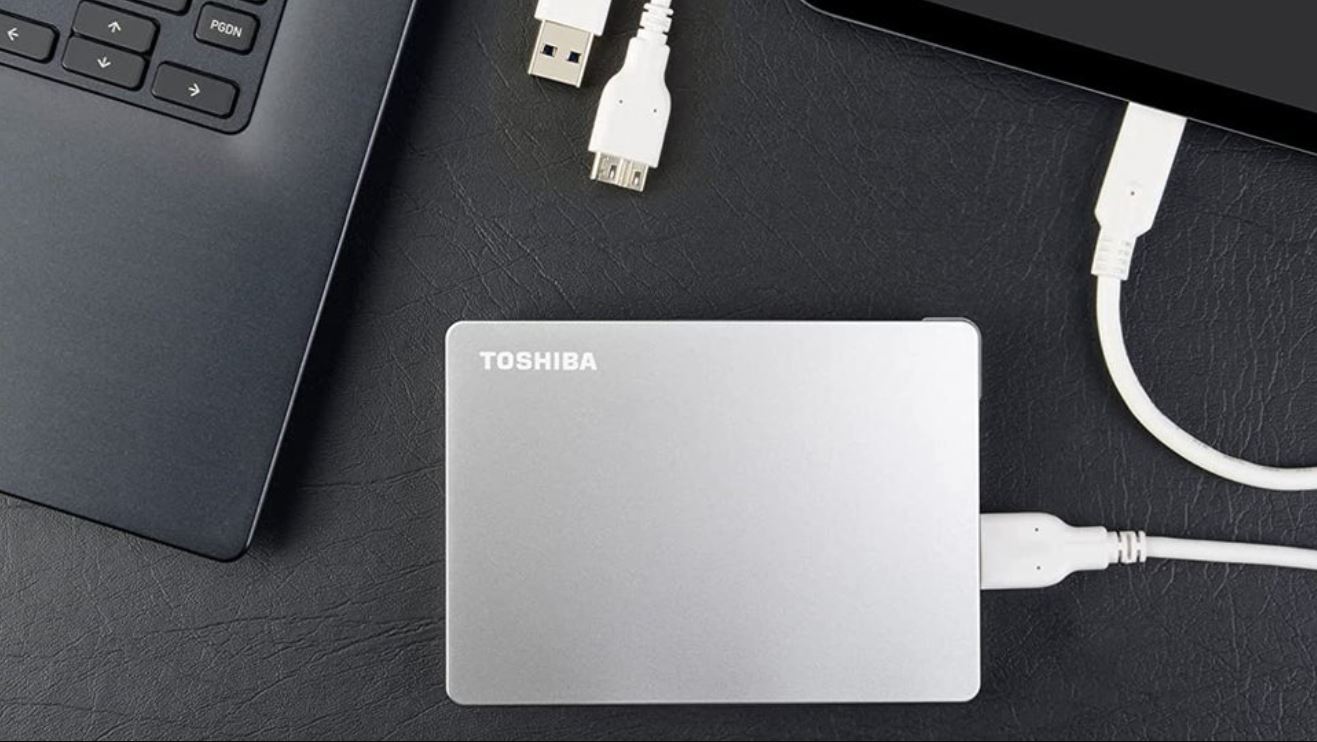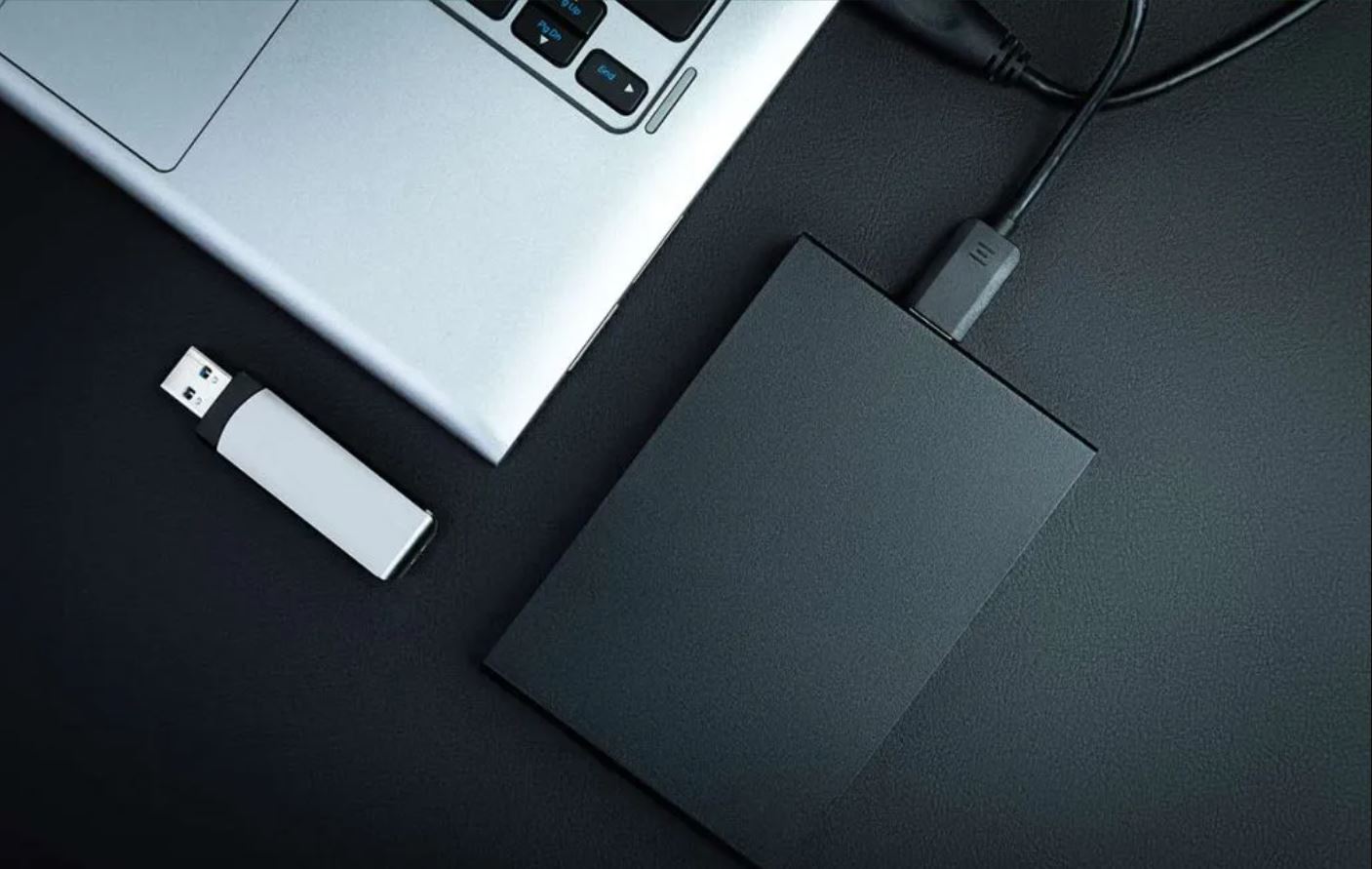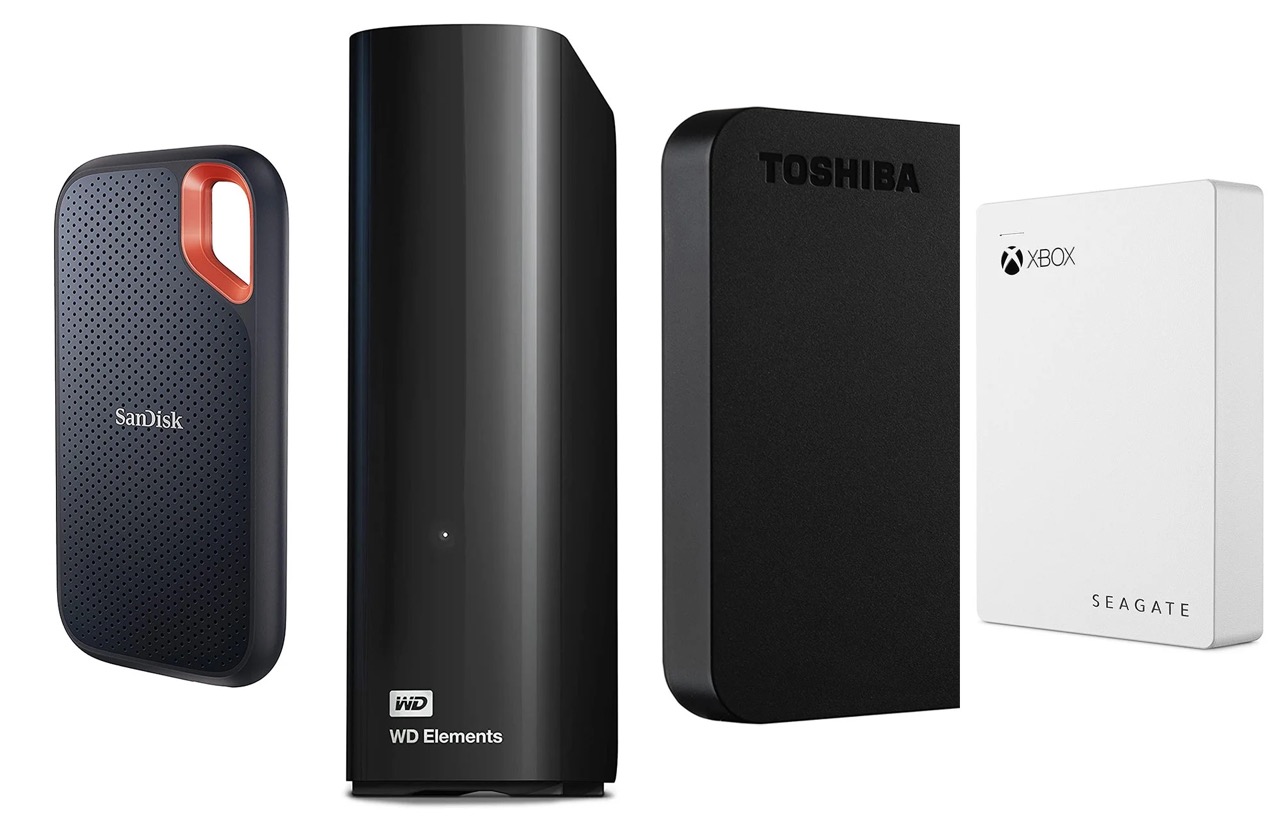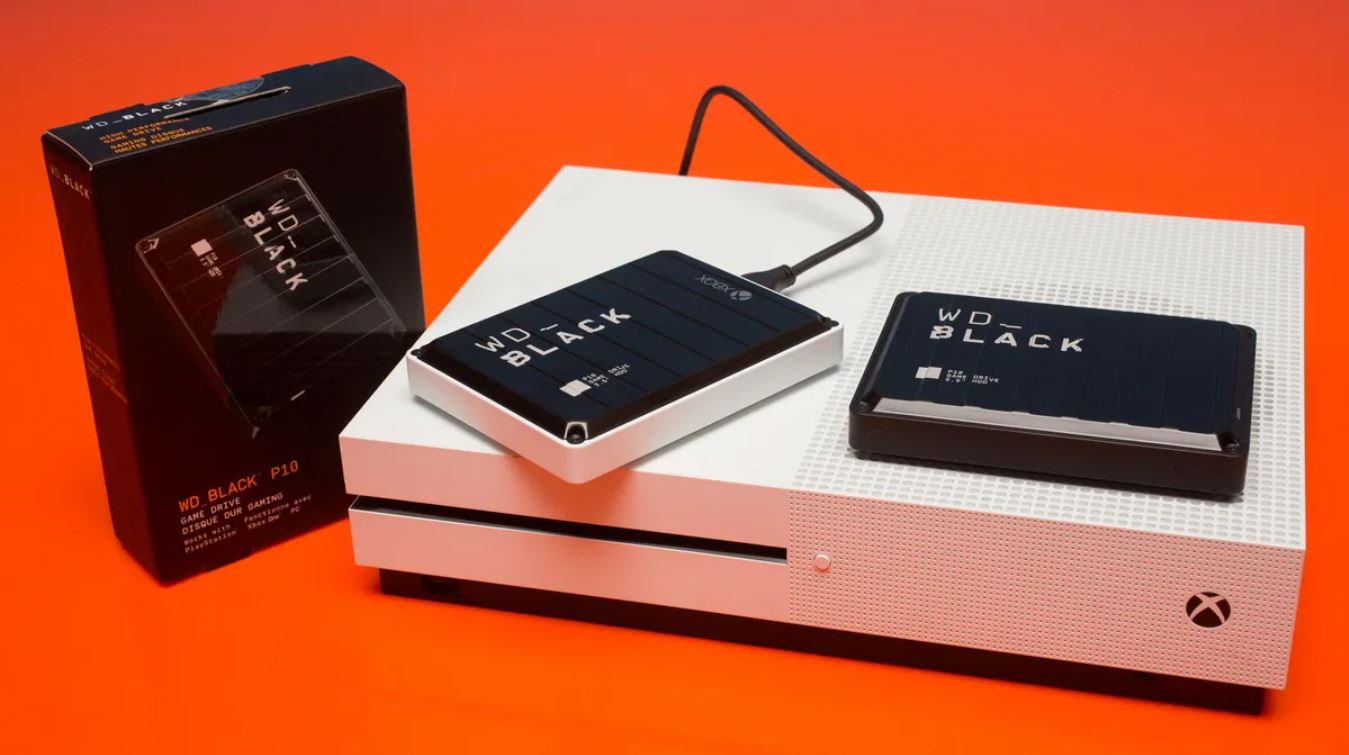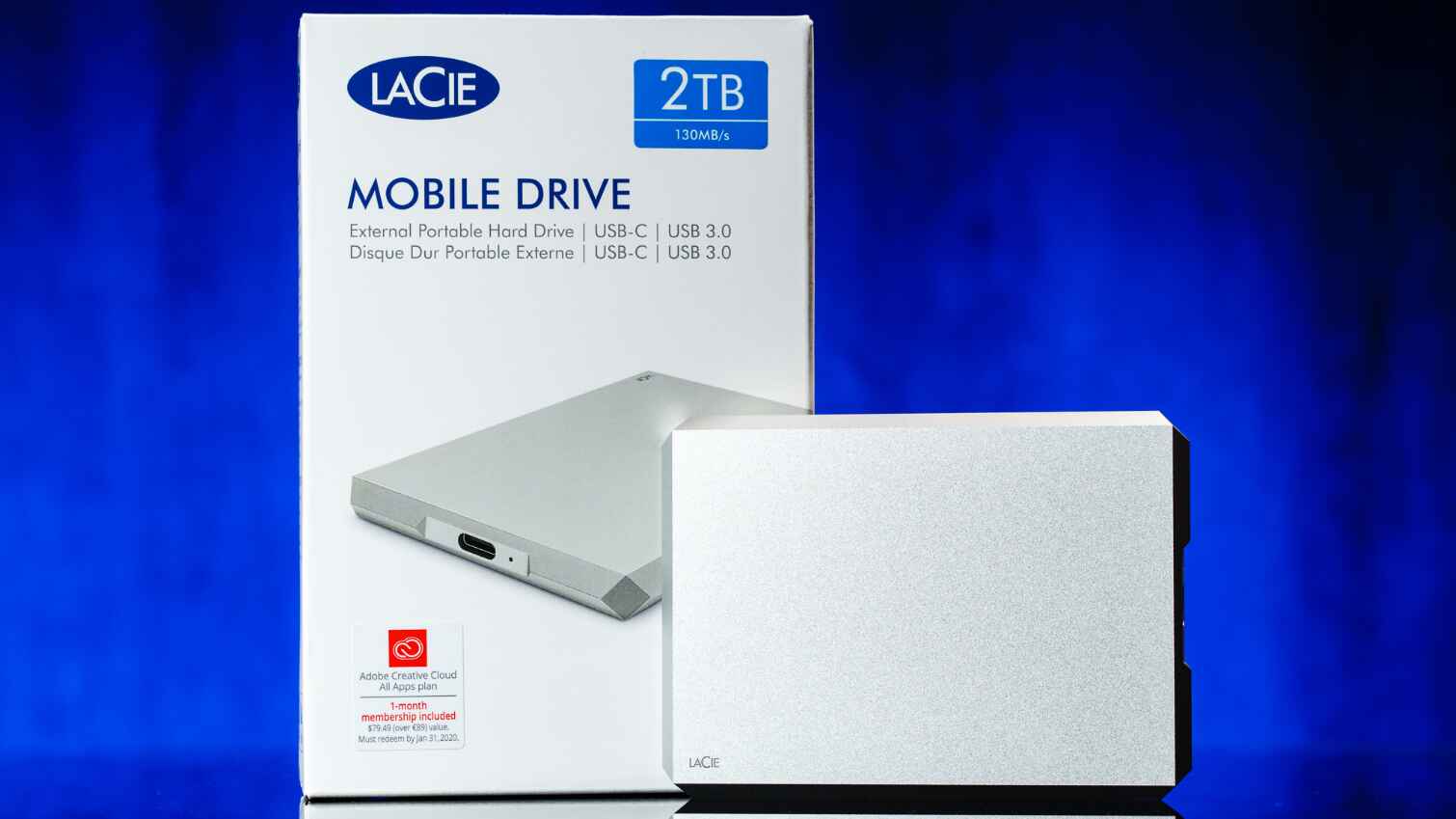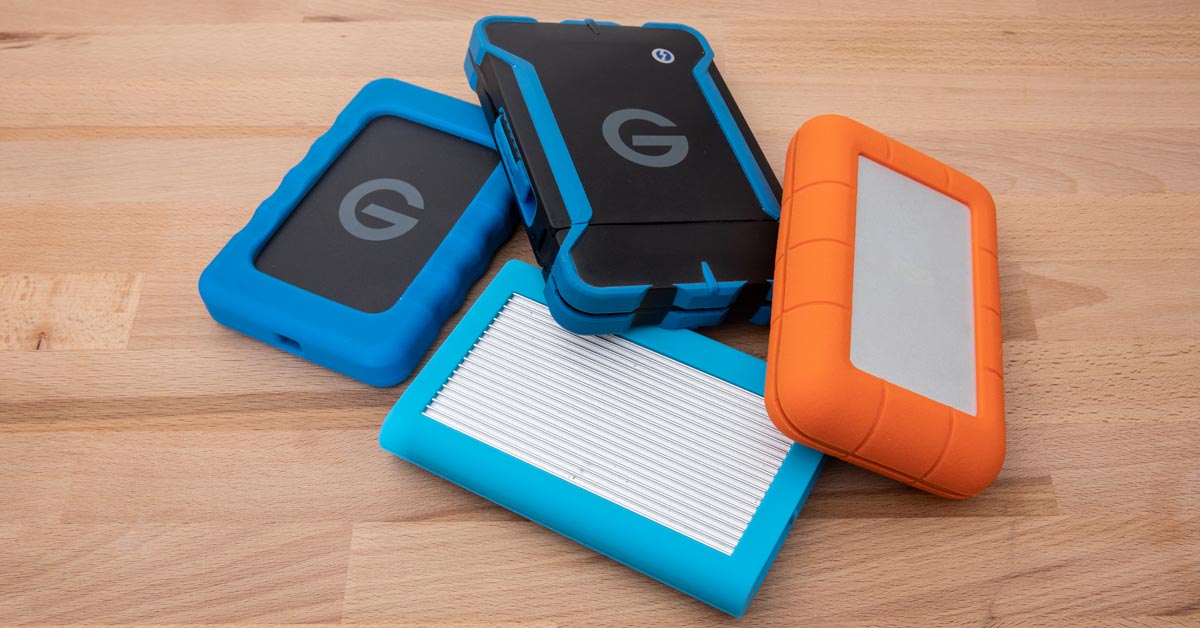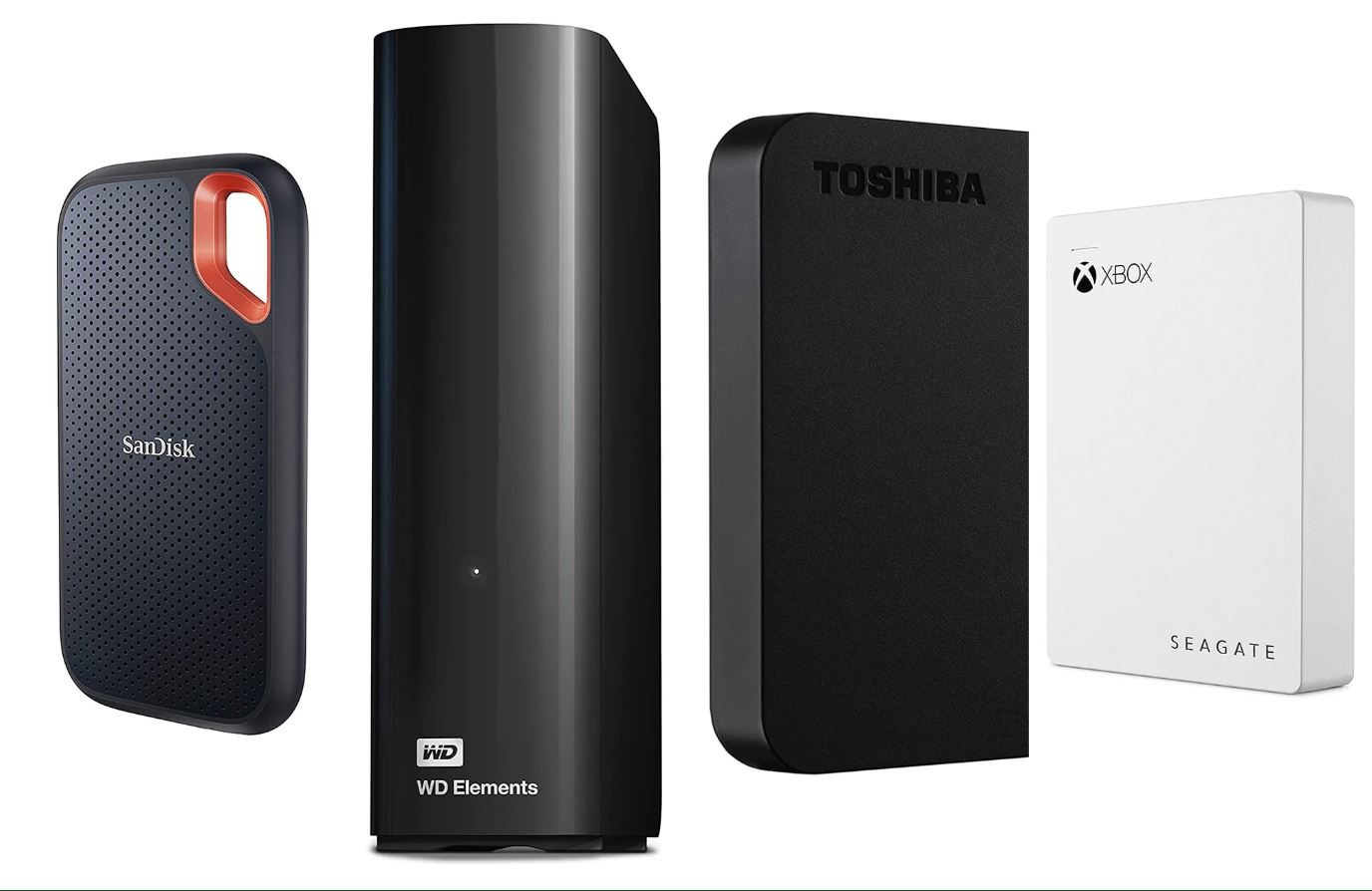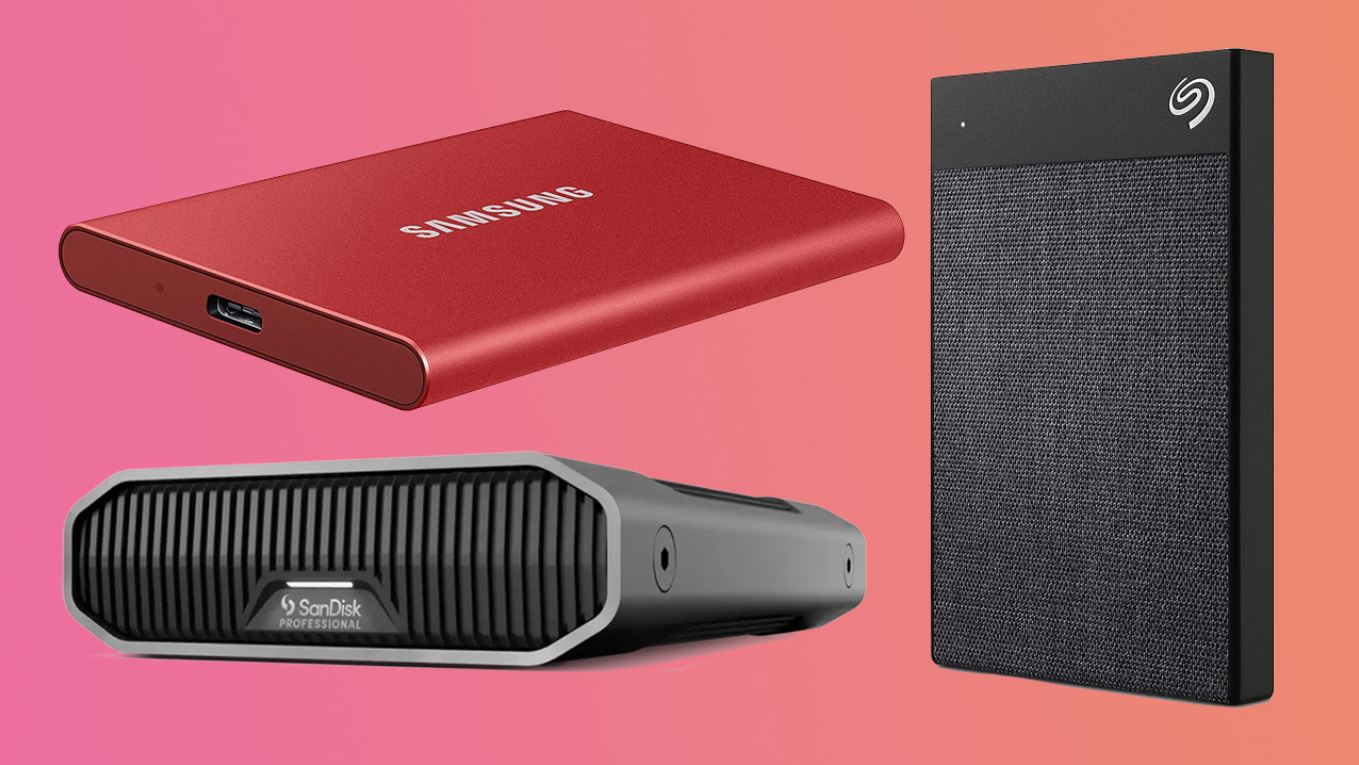Introduction:
Welcome to the world of external hard drives, where you can store and carry your massive amount of data with ease. Whether you are a student, professional, or a regular computer user, having an external hard drive is almost essential. It provides a convenient way to backup and transfer files, ensuring the security of your important data.
But when it comes to choosing an external hard drive, one of the essential considerations is the USB version it supports. Among the various USB versions available, USB 3.0 has gained significant popularity in recent years due to its faster transfer speeds and improved performance.
In this article, we will delve into the topic of USB 3.0 and how it impacts the functionality of external hard drives. We will explore the physical differences between USB 2.0 and USB 3.0, and provide you with some easy ways to determine if your external hard drive is USB 3.0 compatible.
Understanding the distinction between USB 2.0 and USB 3.0 is crucial because it directly affects the speed at which you can transfer files between your computer and external hard drive. So, if you want to make the most out of your external hard drive and experience faster data transfers, read on to find out how you can tell if your external hard drive is USB 3.0.
What is USB 3.0?
USB 3.0, also known as SuperSpeed USB, is the third major version of the Universal Serial Bus (USB) standard. It is a significant improvement over its predecessor, USB 2.0, offering faster transfer speeds, increased power output, and improved overall performance.
USB 3.0 was introduced in 2008 by the USB Implementers Forum (USB-IF), a non-profit organization responsible for developing and promoting USB technology. It quickly became widely adopted and is now the standard for most modern devices, including external hard drives, flash drives, and other peripherals.
One of the most notable features of USB 3.0 is its enhanced data transfer rates. While USB 2.0 had a maximum transfer speed of 480 Mbps (megabits per second), USB 3.0 boasts speeds up to 5 Gbps (gigabits per second), making it up to ten times faster. This means that you can transfer large files, such as movies or backups, in a fraction of the time compared to USB 2.0.
In addition to faster transfer speeds, USB 3.0 also provides improved power delivery. USB 2.0 was limited to delivering up to 500mA of current, which was sufficient for most devices. However, USB 3.0 can provide up to 900mA of current, allowing for faster charging of devices and powering of more power-hungry peripherals.
Furthermore, USB 3.0 introduced a new type of connector known as the “Type-A” connector, which is backward compatible with USB 2.0 ports. However, USB 3.0 devices also feature a new “Type-B” connector to take advantage of the increased performance and functionality.
Overall, USB 3.0 offers numerous advantages over its predecessors, making it the ideal choice for high-speed data transfer and powering demanding devices. Now that we have a basic understanding of USB 3.0, let’s explore why it is important for external hard drives.
Why is USB 3.0 Important for External Hard Drives?
USB 3.0 plays a crucial role in the performance and usability of external hard drives. Here are some key reasons why USB 3.0 is important for external hard drives:
1. Faster Data Transfer Speeds: USB 3.0 offers significantly faster transfer speeds compared to its predecessor, USB 2.0. With USB 3.0, you can transfer large files and backup data at lightning-fast speeds, saving you time and improving productivity. This is particularly useful when dealing with large multimedia files or managing extensive data backups.
2. Improved Performance with Large Files: External hard drives often store large files, such as high-resolution videos, complex software applications, and extensive photo libraries. USB 3.0’s faster transfer speeds ensure that these large files are transferred quickly and efficiently, reducing waiting times and improving overall performance.
3. Seamless Multitasking: USB 3.0’s increased bandwidth allows for smoother multitasking capabilities when using your external hard drive. You can transfer files, stream videos, and access other data on the drive simultaneously, without experiencing any significant slowdowns or interruptions.
4. Backward Compatibility: USB 3.0 is fully backward compatible with USB 2.0 ports, meaning you can connect a USB 3.0 external hard drive to a USB 2.0 port. While the transfer speeds will be limited to USB 2.0 speeds, you still have the flexibility to use your USB 3.0 drive on older devices without USB 3.0 ports.
5. Power Efficiency: USB 3.0 provides improved power delivery, allowing external hard drives to receive higher power outputs for faster charging and efficient operation. This is especially beneficial for portable external hard drives that rely on the USB connection as their power source.
6. Future-Proofing: As USB 3.0 becomes the standard for modern devices, having a USB 3.0 external hard drive ensures compatibility with upcoming systems and devices. Investing in a USB 3.0 drive ensures that your data storage solution will remain relevant and compatible for years to come.
Overall, USB 3.0 significantly enhances the functionality and performance of external hard drives, making them more efficient, versatile, and user-friendly. By leveraging the faster transfer speeds and improved power delivery, USB 3.0 enables seamless data management, file transfers, and backups, ultimately enhancing your overall computing experience.
Physical Differences between USB 2.0 and USB 3.0
USB 3.0 and USB 2.0 can be easily distinguished by their physical characteristics. Here are the key physical differences between the two:
1. Connector Color: One of the most noticeable differences is the color of the USB port and connector. USB 2.0 typically uses black or white connectors, while USB 3.0 connectors are often blue. This visual cue makes it easier to identify a USB 3.0 port or cable at a glance.
2. Number of Pins: USB 3.0 has a total of nine pins in its connector, whereas USB 2.0 only has four pins. The additional pins in USB 3.0 are responsible for enabling SuperSpeed data transfer and increased power delivery.
3. Shape and Size of the Connector: The USB 3.0 Type-A connector has a slightly different shape compared to its USB 2.0 counterpart. It has two additional pairs of contact pins on either side, which allow for faster data transfer speeds. However, USB 3.0 connectors are designed to be backward compatible, so they can still be plugged into USB 2.0 ports.
4. Transfer Speed: USB 3.0 offers significantly faster data transfer speeds compared to USB 2.0. While USB 2.0 has a maximum transfer rate of 480 Mbps, USB 3.0 can achieve speeds up to 5 Gbps, allowing for quicker file transfers and backups.
5. Data Transmission Mode: USB 2.0 uses only one data transmission mode, while USB 3.0 supports three different modes: SuperSpeed, High-Speed, and Full-Speed. The SuperSpeed mode is the fastest and most commonly used for modern devices and external hard drives.
6. Power Delivery: USB 3.0 provides improved power delivery compared to USB 2.0. It can deliver up to 900mA of current, allowing for faster charging of devices and increased power for external hard drives and other peripherals.
7. Shielding: USB 3.0 cables generally have better shielding and insulation compared to USB 2.0 cables. This helps reduce electromagnetic interference, ensuring reliable and error-free data transmission even over longer cable lengths.
By recognizing these physical differences, you can easily identify if your external hard drive or computer supports USB 3.0. While USB 3.0 is backward compatible with USB 2.0, using a USB 3.0-compatible port and cable will ensure that you can utilize the full capabilities of your USB 3.0 external hard drive.
Check the Port on Your External Hard Drive
One of the easiest ways to determine if your external hard drive is USB 3.0 compatible is by examining the port on the drive itself. Here’s how you can check:
1. Look for a Blue USB Port: USB 3.0 ports and connectors are typically colored blue, making them easily distinguishable from USB 2.0 ports. Check the port on your external hard drive to see if it is blue in color. If it is, then you have a USB 3.0 port, indicating that your external hard drive is USB 3.0 compatible.
2. Check for SS Symbol: Another indicator of a USB 3.0 port on your external hard drive is the SuperSpeed (SS) symbol. The SS symbol is a trident-shaped logo that signifies USB 3.0 compatibility. Look for this symbol near the USB port on your external hard drive. If you see it, then your drive is equipped with a USB 3.0 port.
3. Compare with USB 2.0 Ports: If you have multiple ports on your external hard drive, you can compare them to identify which ones are USB 3.0. USB 2.0 ports are typically white or black, while USB 3.0 ports are blue. If any of the ports on your external hard drive appear blue, those are likely the USB 3.0 ports.
4. Refer to the User Manual: In case you’re still unsure about the USB version of your external hard drive, you can refer to the user manual or documentation that came with the device. The manual should provide information about the specifications and features of the external hard drive, including the supported USB version.
By examining the port on your external hard drive and looking for specific colorations or symbols, you can easily determine if your drive supports USB 3.0. However, it’s important to note that even if your external hard drive has USB 3.0 ports, it may also be backward compatible with USB 2.0, allowing you to use it with older devices or computers that only have USB 2.0 ports.
Check the Cable Connection
Ensuring the correct cable connection is another way to verify if your external hard drive is using USB 3.0. Follow these steps to check the cable connection:
1. Inspect the Cable: Take a close look at the cable that connects your external hard drive to your computer. USB 3.0 cables have specific characteristics that differentiate them from USB 2.0 cables. Look for the following features:
- Blue color: USB 3.0 cables often have a blue color, which is a visual indicator of their higher data transfer speed.
- Additional pins: USB 3.0 cables have extra pins inside the connectors. If you can see additional pins or a difference in the number of pins compared to a USB 2.0 cable, it is likely a USB 3.0 cable.
- Labeling: Some USB 3.0 cables have labels or markings that indicate they are SuperSpeed or USB 3.0 certified.
2. Check the Connectors: Examine the connectors on both ends of the cable. USB 3.0 connectors often have a blue interior or blue plastic surrounding the metal connectors. Ensure that both ends of the cable are properly and securely connected to the corresponding USB ports on your external hard drive and computer.
3. Ensure USB 3.0 Compatibility: While USB 3.0 cables are backward compatible with USB 2.0 ports, the reverse is not necessarily true. If you have a USB 2.0 cable, it will not support the faster speeds and additional features of USB 3.0. Ensure that you are using a USB 3.0 cable to take full advantage of the capabilities of your USB 3.0 external hard drive.
4. Swap Cables: If you have multiple cables available, try swapping the cable connected to your external hard drive with a known USB 3.0 cable. Test the transfer speeds and performance to see if there is any noticeable improvement. If the speeds significantly increase, it indicates that the original cable was not USB 3.0 compatible.
5. Cable Length: It’s worth noting that very long USB cables (typically over 10 feet) may experience reduced performance due to signal loss. If you are using an overly long cable, consider using a shorter USB 3.0 cable to maximize the data transfer speeds.
By thoroughly inspecting the cable and ensuring that it meets the specifications of USB 3.0, you can confirm whether your external hard drive is utilizing the USB 3.0 technology for faster data transfer speeds.
Look for SuperSpeed USB Logo
Another way to determine if your external hard drive is USB 3.0 compatible is by looking for the SuperSpeed USB logo. The SuperSpeed USB logo is a certification mark that indicates a device’s compliance with USB 3.0 standards. Here’s how you can identify the SuperSpeed USB logo:
1. Examine the External Hard Drive: Take a close look at your external hard drive’s chassis or enclosure. Many manufacturers proudly display the SuperSpeed USB logo on their products. Look for the logo, which consists of a stylized “SS” superimposed on a trident-shaped icon.
2. Check the Packaging: If you still have the original packaging or box, inspect it for any labels or images related to USB 3.0 or the SuperSpeed USB logo. Manufacturers often use these logos as marketing points to highlight the device’s high-speed data transfer capabilities.
3. Visit the Manufacturer’s Website: If you are unable to find the SuperSpeed USB logo on the external hard drive or its packaging, check the manufacturer’s website. They may provide detailed product information, including the USB version supported by the device.
4. USB-IF Certified: USB 3.0 devices that have passed USB-IF (USB Implementers Forum) compliance testing are eligible to display the SuperSpeed USB logo. The USB-IF is an industry organization responsible for developing and promoting USB technology standards. If your external hard drive carries the SuperSpeed USB logo, it signifies that it has met the required specifications set by USB-IF.
By locating the SuperSpeed USB logo on your external hard drive or its packaging and confirming USB-IF certification, you can be confident that your device is indeed USB 3.0 compatible. This logo serves as a visual confirmation of the device’s compliance with USB 3.0 standards and its ability to deliver faster data transfer speeds.
Check the Device Manager
An additional method to determine if your external hard drive is using USB 3.0 is by checking the Device Manager on your computer. Follow these steps to check the device manager:
1. Open Device Manager: On your Windows computer, right-click on the Start button and select “Device Manager” from the context menu. This will open the Device Manager window, which provides an overview of all the connected devices.
2. Locate Universal Serial Bus Controllers: In the Device Manager window, expand the category labeled “Universal Serial Bus controllers” by clicking on the arrow next to it. This category lists all the USB controllers and hubs installed on your computer.
3. Look for USB 3.0 Controllers: Within the Universal Serial Bus controllers category, look for any entries that include the term “USB 3.0” or “xHCI” (eXtensible Host Controller Interface). These entries represent the USB 3.0 controllers present on your computer. If you find any, it indicates that your computer supports USB 3.0 technology.
4. Verify External Hard Drive: Connect your external hard drive to your computer and observe the Device Manager. Look for any new entries that appear when you connect the drive. If you see any USB 3.0 or xHCI-related entries associated with your external hard drive, it confirms that your external hard drive is using USB 3.0.
5. Driver Updates: Occasionally, USB 3.0 drivers may need to be updated, especially if your computer does not recognize the external hard drive as a USB 3.0 device. To ensure proper functioning, visit the manufacturer’s website or use Windows Update to check for the latest USB 3.0 drivers for your computer’s operating system.
Note that the steps outlined above may vary slightly depending on the version of Windows you are using. However, the general concept remains the same – to locate USB 3.0 controllers and verify their presence in the Device Manager to confirm USB 3.0 compatibility.
By checking the Device Manager and identifying USB 3.0-related entries associated with your external hard drive, you can be sure that your device is utilizing USB 3.0 technology for faster data transfer speeds and improved performance.
Use Benchmarking Software
Another effective method to determine if your external hard drive supports USB 3.0 is by using benchmarking software. Benchmarking software allows you to measure the performance of your external hard drive and compare it with standard performance metrics. Follow these steps to utilize benchmarking software:
1. Select a Benchmarking Tool: Choose a reliable benchmarking software that is compatible with your operating system. Some popular options include CrystalDiskMark, HD Tune, and ATTO Disk Benchmark, among others. These tools provide comprehensive performance analysis and testing for your external hard drive.
2. Connect External Hard Drive: Ensure that your external hard drive is properly connected to your computer using a USB 3.0 cable and port. Make sure it is recognized by your computer and accessible before proceeding with the benchmarking process.
3. Run the Benchmark Test: Launch the chosen benchmarking software and select the appropriate settings for testing your USB 3.0 external hard drive. These settings usually include the file size, the number of passes, and the type of performance test (e.g., sequential read/write, random read/write).
4. Evaluate Results: Once the benchmark test completes, the software will display the results, including the transfer speed, read/write performance, and other relevant metrics. Compare these results with the expected speeds of USB 3.0, which should be significantly higher than USB 2.0 speeds.
5. Compare with USB 2.0: As a point of reference, you can also run the benchmark test on a USB 2.0 port with the same external hard drive. Compare the results to determine if there is a noticeable difference in speed and performance. If the benchmark results show significantly faster speeds on the USB 3.0 test, it confirms that your external hard drive is USB 3.0 compatible.
Benchmarking software provides a practical way to measure the performance of your external hard drive and validate the presence of USB 3.0 capabilities. By comparing the benchmark results with the expected speeds of USB 3.0, you can confidently confirm if your external hard drive is using USB 3.0 technology for optimal data transfer speeds and overall performance.
Conclusion
Identifying whether your external hard drive is USB 3.0 compatible is essential for maximizing its performance and benefiting from faster data transfer speeds. By examining the physical characteristics of the drive, such as the port color, connector type, and the presence of the SuperSpeed USB logo, you can easily determine if your external hard drive supports USB 3.0.
Checking the cable connection and ensuring that you are using a USB 3.0 cable further verifies the compatibility. You can also refer to the Device Manager on your computer to look for USB 3.0 controllers or use benchmarking software to measure the performance of your external hard drive.
Understanding the advantages of USB 3.0 and its importance for external hard drives is essential in today’s data-driven world. USB 3.0 offers faster data transfer speeds, improved power efficiency, and backward compatibility with USB 2.0, providing a seamless and efficient user experience.
By utilizing these methods, you can confidently determine if your external hard drive is USB 3.0 compatible, allowing you to take full advantage of its capabilities and enjoy faster file transfers, improved multitasking, and enhanced overall performance.
Remember, even if your external hard drive is USB 3.0 compatible, it is crucial to ensure that your computer or device also supports USB 3.0 technology to experience the full benefits. Always check the specifications of your computer or consult the device’s documentation to ensure compatibility.







